Early Bird
Deadline
January 31, 2026
Judging
Date
May 18, 2026
Winners
Announced
June 10, 2026

Embark on a captivating journey into the world of Romanian wines, guided by Marinela Ardelean’s innovative approach. From her roots in the picturesque region of Maramures, Transylvania, to her pioneering efforts in promoting Romanian wines globally, Marinela's story is one of passion, excellence, and unwavering dedication. Through her work, she is not only elevating the status of Romanian wines but also positioning them among the finest in Europe. Join us as we delve into Marinela's journey and discover the unique qualities that make Romanian wines stand out on the global stage.
Italy was the primary school for me. I learned about taste, terroir, pairings, wine quality, and most of all, wine as a part of everyday life. The knowledge I acquired in Italy made me realize the potential of Romanian wine. Of course, I took with me all that knowledge when I decided to dedicate myself to Romanian wines.
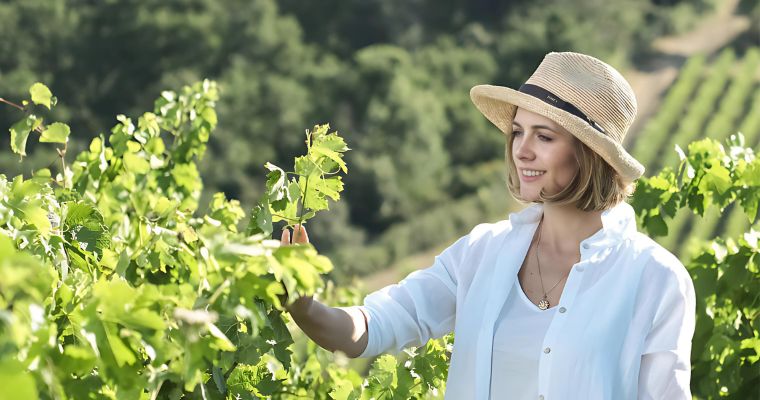
My experience training as a sommelier was brief and came only from the necessity of understanding all sides of the wine business. Since then, I have had many more professional accomplishments. Of course, for some of the audience, the titles and diplomas help build up credibility, and this is a necessary trait for any promoter, ambassador, or representative. For me, they were simply evidence of passing through a certain educational stage.
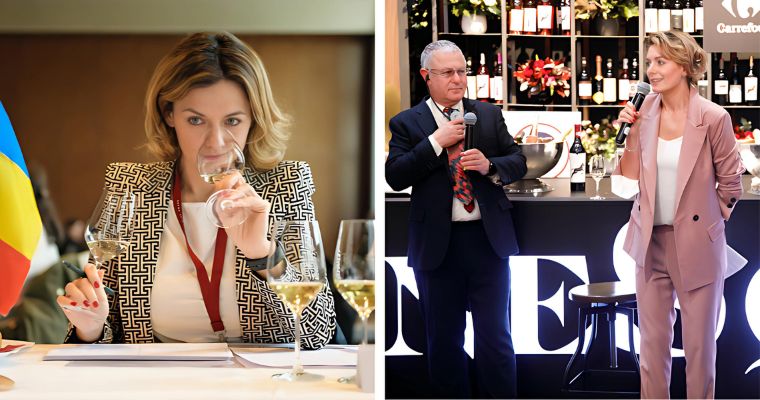
As many people in Romania say now - anything helps. Joke aside, Italy hosts over one million Romanians, who eat and live like Italians without forgetting they are Romanians. So, they are by themselves a significant potential market for Romanian wines, to remind them of the taste back home, while still in the cultural context of Italian food. As for wine lovers worldwide, I think it was an interesting exercise - pairing wines they still consider exotic, even though Romania had been making wine for thousands of years, and the consecrated dishes of one of the world’s greatest cuisines.
The PhD thesis is just a first step, of course. We need to see how the information I unveiled settles and go from there. Ideally, there will be other industries that can contribute to making wine the spearhead of Romanian image vectors - tourism and food at first, but also banking, manufacturing, and others. I think the wine industry, as it is now, lacks the ability and the budget to make a decisive move on foreign markets. The easiest way is to bring people to Romania, an outstanding experience, and turn them into ambassadors for our wine, food, and destinations.
We are in a permanent development. We constantly update the databases of wineries, wine grape varieties, and available wines, but we also introduce the key players to the markets through video and audio content in various formats, we contribute to educating both local and international audiences. Our local goal is to bring back wine as part of everyday life for Romanians while abroad - through tastings, fairs, classes, events, workshops, and special events with experts - we try to let people know that Romania makes wine. And not just any wine, very good wine.
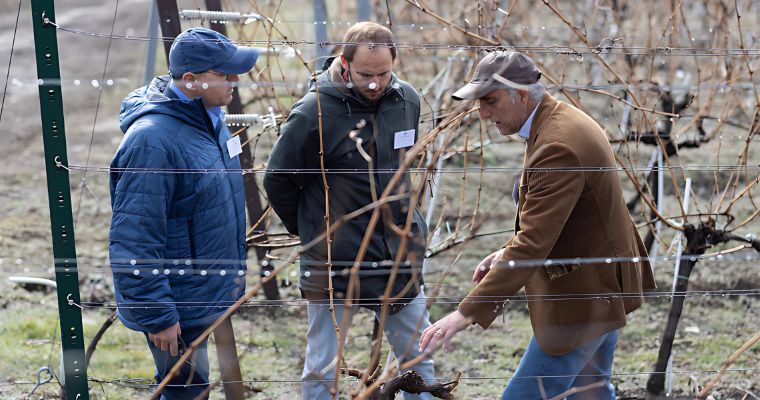
Well, I am proud to say that we have seen a constant increase in the number of foreign participants, we also had people coming from other countries, especially for the festival. In the last edition, we had exhibitors from 14 different countries, meaning that Romanian wine was presented in an international context, where the wine’s quality is the main criterion to attend the fair as a producer, thus creating a unique experience for both the local and international audience. Nevertheless, I am most glad about the permanent increase in diplomatic personnel, both Romanian and foreign. Wine plays greatly as a Romanian ambassador.
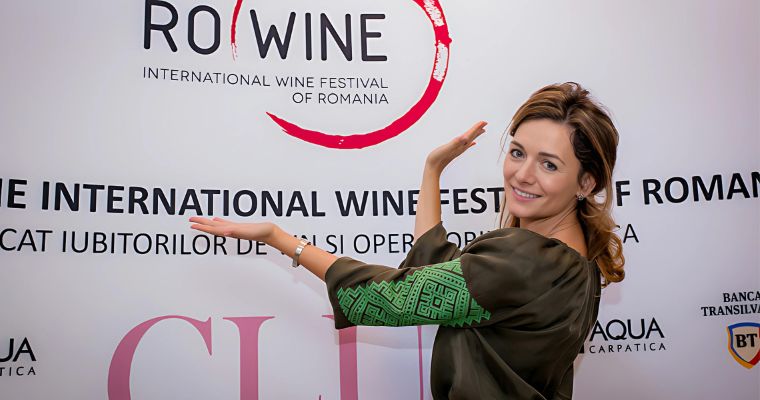
So far, Romanian wine has had a limited presence on foreign shelves. A few wineries that managed to export quite a lot are Recas, Averesti, and Budureasca. Although their focus is primarily on bottom-shelf wines, I think they are doing a great job of letting people know that Romania makes wine. In the future, this will be an important bridgehead for exporting wines from higher price ranges.
The two major impediments are prices and lack of awareness. Most wineries in Romania were born in the past 10-20 years and are still recovering their initial investments, which is felt in each bottle's final price. We have already stated that Romanian wine is mainly unknown. While there is still little coherence in communicating Romanian wine abroad, the good news is that there are quite a few wineries approaching the moment when their investments will be recovered, and they will afford to drop prices to a competitive level. Also, in communicating wine and acting together, there are a few promising signs, including Romania’s 21 wineries participating in this year’s ProWein with a common slogan, “Yes, Romania makes wine!”
I’d say that first come the markets where the Romanian population is significant - Italy and Spain mainly, although we shouldn’t count a lot on nostalgic consumption. However, there is a significant potential market there, and pushing the right buttons may be beneficial. Some of the main targets should be the USA, Canada, Germany, and also the UK market, which is a bit difficult to tap into after Brexit.
The number of importers and distributors interested in Romanian wines is increasing constantly. The first thing they must do is to make potential consumers taste the Romanian wine. So, there is a significant marketing effort with unpredictable results with many Romanian producers hesitating in investing into opening foreign distribution channels. In the end, the producers who believe and invest in export will set the standards and be pioneers in the new chapter where Romanian wines will be available in the wine lists of cool restaurants and trendy wine bars.
The state institutions, so far, only have attributions in using some funds to pay for (part of) the participation of Romanian wineries in foreign wine fairs and exhibitions. I am not aware of the existence of any coherent plan to promote Romanian wines abroad.
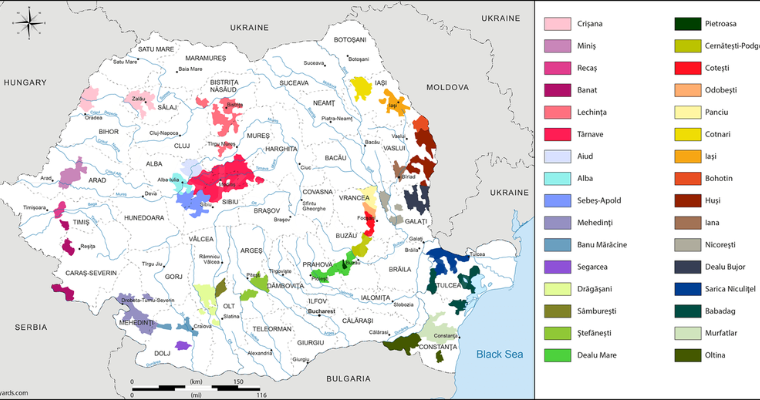
Picture Credit: Vineyards.com
I think the accent should fall onto the novelty of wine grapes and winemaking regions. Romania has a huge amount to offer in terms of different terroirs, with clear differences and with a very strong taste and sense of the place. After convincing the audience regarding the quality of their wines, the producers’ next step should be acting together and building a brand for the country of origin, then for the winemaking regions.
We already have biodynamic and organic producers, several producers already employing ecological and sustainability practices, although we are not officially in transition to ecological vineyards, and we still have a lot of land that qualifies for new ecological and biodynamic plantations. So, the trend for bio, eco, and sustainable wines may prove very beneficial for Romania.
What we are witnessing is the beginning of a trend. There weren’t changes so profound that would change the structure of the market. In time, should we see it growing firm roots, I think it would only make Romanian wines more appealing to foreign wine lovers.
The local varieties bear a strong sense of the place. Even more, they are beautiful, genuine wines, while the grapes and vines are strong enough to almost guarantee a healthy harvest without catastrophic conditions. As for Chardonnay, we must keep in mind that Romania has a relatively young market, with the majority of consumers barely reaching a level of minimum knowledge about wine. So, grapes like Chardonnay, almost guaranteed to make a pleasant wine, are coming into fashion now, 20-30 years after the West had its Anything But Chardonnay backlash.

My goal is to see the Romanian wine on the same level as the French and Italian wines, and my entire work is dedicated to taking the Romanian wine to the place where it belongs. It’s a difficult road ahead, but all the signs are there. The industry still has plenty of space to develop - we only have about 500 wineries; wine tourism is in its first days and about to blossom, and the food industry and retail understand the importance of local taste. So, it all can only go upwards from here.
[[relatedPurchasesItems-61]]
Marinela Ardelean's journey in the wine industry has been instrumental in shaping the future of Romanian wines. Her strategies and commitment to sustainability have not only elevated Romanian wines on the international stage but also set a standard for excellence in the industry. As we look ahead, it's clear that Marinela's passion and dedication will continue to drive the success of Romanian wines, making them a shining star in the world of wine.
In conversation with Malvika Patel, Editor and VP, Beverage Trade Network
Enter your Wines now and get in front of top Sommeliers, Wine Directors, and On-Premise Wine Buyers of USA.
